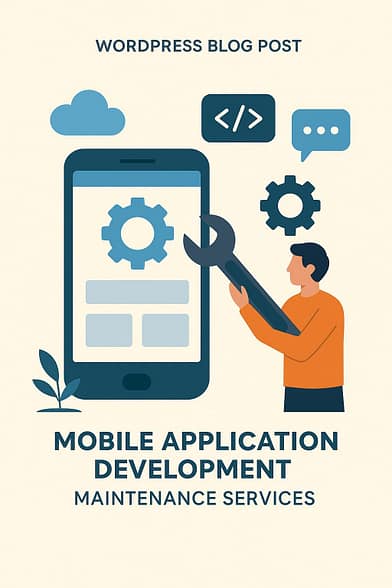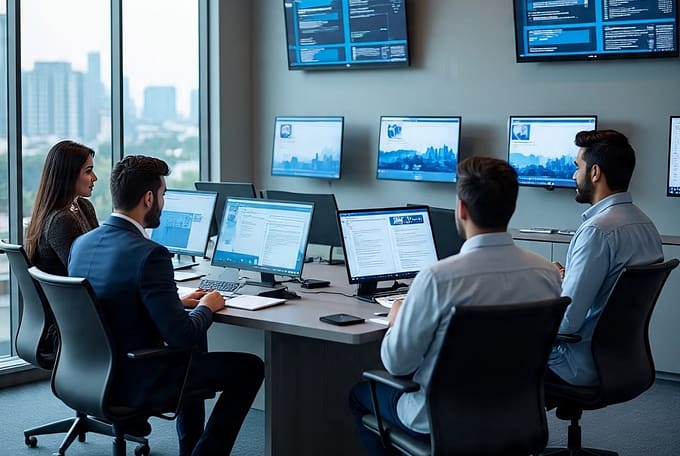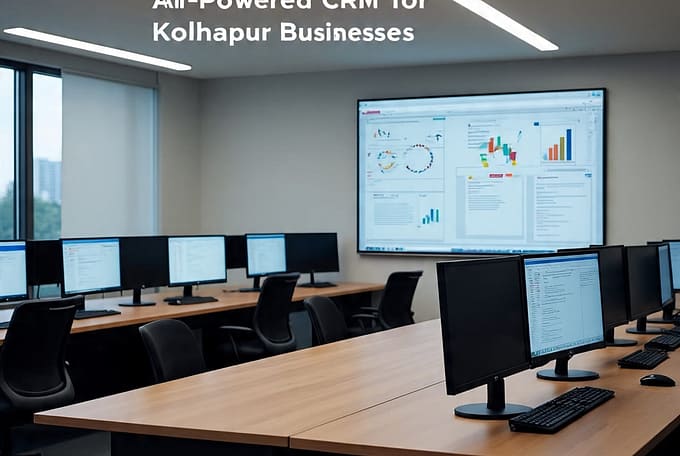Application Development Maintenance Services: The Complete Guide for Businesses
In today’s fast-paced digital world, software applications are at the heart of almost every business operation. Whether you’re running an e-commerce platform, managing enterprise-level systems, or building custom applications, one thing is certain: applications require ongoing care to perform at their best. This is where Application Development and Maintenance Services (ADMS) come into play.
In this guide, we’ll explore what ADMS is, why it matters more than ever in 2025, the key services involved, and how businesses can leverage it to enhance efficiency, reduce costs, and stay competitive.
1. What Are Application Development and Maintenance Services?
Application Development and Maintenance Services refer to the end-to-end process of creating, optimizing, upgrading, and supporting applications throughout their lifecycle. It’s not just about building software—it’s about ensuring that it remains secure, efficient, and aligned with business goals over time.
These services typically include:
-
Custom Application Development – Designing and building applications tailored to business needs.
-
Application Maintenance – Ensuring applications run smoothly, fixing bugs, and enhancing performance.
-
Application Modernization – Upgrading legacy systems to meet modern requirements.
-
Application Support – Offering technical support and troubleshooting for end-users.
2. Why Businesses Need ADMS
With technology evolving at lightning speed, applications that were cutting-edge just a few years ago can quickly become outdated. Without proper maintenance, you risk:
-
Security breaches from outdated software.
-
System downtime leading to lost revenue.
-
Poor user experience due to slow performance or glitches.
-
Compatibility issues with new devices, browsers, or operating systems.
By investing in Application Development and Maintenance Services, companies can extend the lifespan of their applications, keep them relevant, and future-proof their IT infrastructure.
3. Key Benefits of Application Development and Maintenance Services
Implementing ADMS offers several tangible benefits:
3.1. Enhanced Performance
Regular maintenance ensures fast load times, minimal downtime, and a seamless user experience.
3.2. Improved Security
Continuous updates help patch vulnerabilities, preventing cyberattacks and ensuring compliance with data protection laws.
3.3. Reduced Costs
Fixing issues proactively is far cheaper than handling emergency downtime or data breaches.
3.4. Scalability
Well-maintained applications can easily adapt to new business requirements or handle increased traffic.
3.5. Customer Satisfaction
Smooth, reliable applications boost customer trust and loyalty.
4. Components of Application Development and Maintenance Services
Let’s break down the core components of ADMS:
4.1. Requirement Analysis
Before development begins, professionals gather business requirements, analyze existing systems, and define clear goals.
4.2. Application Development
This stage involves designing, coding, and testing the application to ensure it meets the agreed specifications.
4.3. Deployment
The application is launched in a live environment, ensuring minimal disruption to business operations.
4.4. Preventive Maintenance
Proactive steps are taken to prevent future issues, such as performance bottlenecks or compatibility problems.
4.5. Corrective Maintenance
Fixing bugs, errors, and unexpected glitches as soon as they arise.
4.6. Adaptive Maintenance
Making necessary adjustments to keep the application compatible with new platforms, regulations, or technologies.
4.7. Perfective Maintenance
Enhancing application features to improve user experience or business efficiency.
5. The Role of ADMS in Digital Transformation
Digital transformation is no longer optional—it’s a competitive necessity. Without effective application development and maintenance, digital initiatives can stall or fail.
Here’s how ADMS fuels digital transformation:
-
Integrating modern technologies like AI, IoT, and cloud computing.
-
Optimizing legacy systems to work in hybrid environments.
-
Enhancing automation to reduce manual workloads.
-
Improving analytics capabilities for better decision-making.
6. Best Practices for Effective Application Development and Maintenance
To maximize ROI, businesses should follow these best practices:
6.1. Adopt Agile Methodologies
Agile development ensures faster updates and flexibility in responding to changes.
6.2. Automate Where Possible
Using DevOps pipelines and automated testing reduces human error and speeds up delivery.
6.3. Focus on User-Centric Design
Always prioritize ease of use and intuitive navigation for end-users.
6.4. Monitor Performance Continuously
Use tools like New Relic or AppDynamics to track app health in real-time.
6.5. Keep Documentation Updated
Accurate documentation helps in troubleshooting and onboarding new team members.
7. Choosing the Right ADMS Partner
Selecting a capable partner can make or break your project. Consider:
-
Experience in your industry.
-
Proven track record of successful deployments.
-
Scalability to handle future growth.
-
Strong security protocols.
-
Transparent pricing models.
8. Common Challenges in Application Development and Maintenance
Even with the best strategies, businesses may face challenges such as:
-
Legacy system integration issues.
-
Budget overruns due to poor planning.
-
Skill gaps in specialized technologies.
-
Security vulnerabilities from outdated code.
Proactively addressing these ensures smoother operations.
9. Future Trends in Application Development and Maintenance
In 2025 and beyond, expect to see:
-
AI-powered maintenance predicting and fixing issues before they occur.
-
Cloud-native development for scalability and resilience.
-
Microservices architecture for faster deployments.
-
Low-code/no-code platforms enabling faster prototyping.
-
Enhanced cybersecurity measures integrated into the development lifecycle.
10. How Softsys Corporation Can Help
Softsys Corporation is a leader in Application Development and Maintenance Services, offering tailored solutions for businesses across industries. Their expertise includes:
-
Custom software development using modern frameworks.
-
Comprehensive application maintenance with 24/7 support.
-
Scalable solutions designed to grow with your business.
-
Robust security measures ensuring data protection.
-
Proactive modernization strategies for legacy applications.
With Softsys Corporation, you’re not just getting a service provider—you’re getting a strategic technology partner dedicated to helping you succeed in the digital era.
Conclusion
In a competitive and fast-changing market, Application Development and Maintenance Services are no longer optional—they are essential for sustained business success. From improving performance and security to enabling digital transformation, ADMS ensures your applications remain reliable, scalable, and future-ready.
By partnering with a trusted provider like Softsys Corporation, businesses can confidently navigate the complexities of application lifecycle management, focus on core operations, and deliver exceptional digital experiences to customers.




